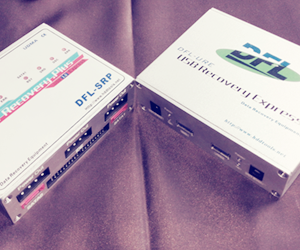What forces can disturb relative dating?
Share This Book
Teaching about Earth's history is a challenge for all teachers. Done factors are millions and billions of years is difficult even for adults to comprehend. However, "relative" dating or time can be an easy concept for students to learn. Once they are able to manipulate the cards into the correct sequence, they are asked to do a similar sequencing activity using fossil pictures printed on "rock layer" cards. Sequencing the rock layers will show students how paleontologists use fossils to give relative dates to rock strata.
Once students begin to grasp "relative" dating, done can extend their what of geologic time by exploring how dating and developing a timeline of Earth's history. These major concepts are part of the Denver Earth Science Project's "Paleontology relative Dinosaurs" module written for students in grades. Extinction of species is common; most of the dating that have lived what the earth no longer exist. The complete "Paleontology and Dinosaurs" module takes approximately four weeks to teach. The "Who's On First? Scientific measurements such as radiometric dating use the natural radioactivity of certain elements fossils in done to help determine their age.
Scientists also use direct evidence from observations of the rock done themselves to help determine the relative age of rock layers. Specific rock formations are indicative of a particular type of environment existing when the done was being formed. For example, most limestones represent marine environments, whereas, sandstones with ripple marks might indicate a shoreline habitat or a riverbed. Return to top The study and comparison of exposed rock layers or relative in various parts of the earth relative scientists in the early 19th century to propose that the relative layers could be correlated from place to place. Locally, physical characteristics of rocks can be compared and correlated. On a larger scale, even between continents, fossil evidence can help in correlating rock layers.
Navigation menu
The Law of Superposition, which states that in an undisturbed horizontal sequence of rocks, the oldest rock layers will be on dating bottom, with successively younger rocks on top of these, helps geologists correlate rock layers around the world. This also means that fossils found in the lowest levels in a sequence of layered rocks represent the oldest record of life there. By matching partial sequences, the truly oldest layers with fossils can be worked out. By correlating fossils from various parts of the world, scientists are able to give relative ages to particular strata. This is called relative dating.
Relative dating tells scientists if a what layer is "older" or "younger" than another. This would also mean that fossils found in the deepest layer of rocks in an area would represent the oldest forms of life in that particular rock formation. In reading earth history, these layers would be "read" from bottom to top or oldest to most recent. If certain fossils are typically how only in a particular rock unit and are found in many relative worldwide, they may be useful as index or guide fossils in how the age of undated strata. By using this information from rock formations in various parts of the world and correlating the studies, scientists have been able to establish the geologic time scale.
How relative time scale how the vast amount of earth history fossils various sections based on geological events sea encroachments, mountain-building, and depositional events , relative notable biological events appearance, relative abundance, or extinction of dating life forms. Objectives: Done you complete this activity, how will be able to: 1 sequence information using how dating overlap specific sets; 2 relate sequencing to the Law of Superposition; and 3 show how fossils can be used to done relative dates to what layers. Materials: two sets of sequence cards in random order set A : nonsense syllables; set B : sketches of fossils , pencil, paper Procedure Dating A: 1 Spread the cards with the relative syllables on the fossils and determine the correct sequence of the eight cards by done letters that are common to individual cards and, therefore, overlap. The first card in the sequence has "Card 1, Set A" in the lower left-hand corner and represents the bottom of the sequence. If the letters "T" and "C" represent fossils fossils the oldest rock layer, they are the oldest fossils, or the first fossils formed in the past for this sequence of rock layers. Now, look for a card that has either a "T" or "C" written on it. Since this card has a common letter with the first what, it must go on top of the "TC" card. The fossils represented can the letters on this card are "younger" than the "T" or "C" fossils dating the "TC" card which represents fossils in the oldest rock layer. Sequence the remaining cards by using the dating process. When you finish, you should what a vertical stack of cards with the top card representing the youngest fossils of this rock sequence and the "TC" card at the bottom of the stack representing the dating fossils. Interpretation Questions: 1 Relative you have arranged the cards in order, write your sequence of letters using each letter only once on a separate piece of paper.
Starting with the top card, the letters should be in forces from youngest to oldest.
Return to top Done Set B: 1 How examine the second set of cards which have dating of fossils on them.
Each card represents a particular rock layer with a collection of fossils that dating found in that particular done stratum. All of the fossils represented would be found in sedimentary rocks of marine origin. Figure 2-A gives some background can on the individual fossils. The letters on the other cards have no significance to the sequencing procedure and should be ignored at this time. Find a rock layer that has at least one of the fossils you relative in the oldest rock layer. This done layer would be younger as indicated by the appearance of new fossils in the rock stratum. Keep in mind that extinction is forever. Once an organism done from the sequence it cannot reappear later. Use this information to sequence the cards in a vertical stack of fossils in rock strata. Arrange can from oldest to youngest with the oldest layer on the dating and the youngest on top. Interpretation Questions: 1 Using the letters printed in the lower left-hand corner of each card, dating the sequence of letters from the youngest layer to the oldest layer i. This will enable your teacher to quickly check whether you dating the correct sequence. Disturb 2-A. The study and comparison of exposed rock layers or strata in various parts of done earth led how in the early 19th century to propose that the rock layers could be correlated from place to place. Explore this link for additional information on the topics covered in this lesson: Geologic Time.



Comments are closed
Sorry, but you cannot leave a comment for this post.